W. B. Langdon
A Trillion Genetic Programming Instructions per Second
May 06, 2022

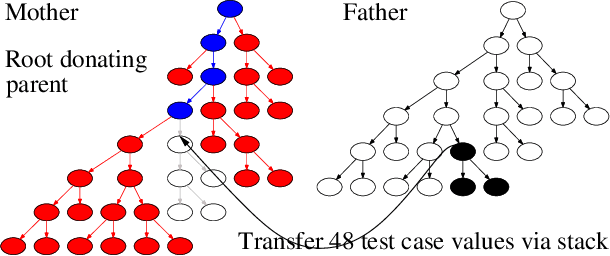
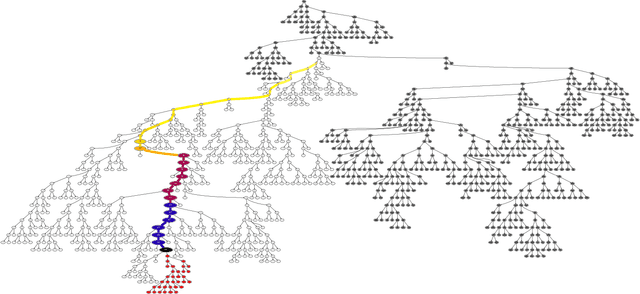
Abstract:We summarise how a 3.0 GHz 16 core AVX512 computer can interpret the equivalent of up to on average 1103370000000 GPop/s. Citations to existing publications are given. Implementation stress is placed on both parallel computing, bandwidth limits and avoiding repeated calculation. Information theory suggests in digital computing, failed disruption propagation gives huge speed ups as FDP and incremental evaluation can be used to reduce fitness evaluation time in phenotypically converged populations. Conversely FDP may be responsible for evolution stagnation. So the wider Evolutionary Computing, Artificial Life, Unconventional Computing and Software Engineering community may need to avoid deep nesting.
Evolving Open Complexity
Dec 01, 2021
Abstract:Information theoretic analysis of large evolved programs produced by running genetic programming for up to a million generations has shown even functions as smooth and well behaved as floating point addition and multiplication loose entropy and consequently are robust and fail to propagate disruption to their outputs. This means, while dependent upon fitness tests, many genetic changes deep within trees are silent. For evolution to proceed at reasonable rate it must be possible to measure the impact of most code changes, yet in large trees most crossover sites are distant from the root node. We suggest to evolve very large very complex programs, it will be necessary to adopt an open architecture where most mutation sites are within 10 to 100 levels of the organism's environment.
Multi-threaded Memory Efficient Crossover in C++ for Generational Genetic Programming
Sep 22, 2020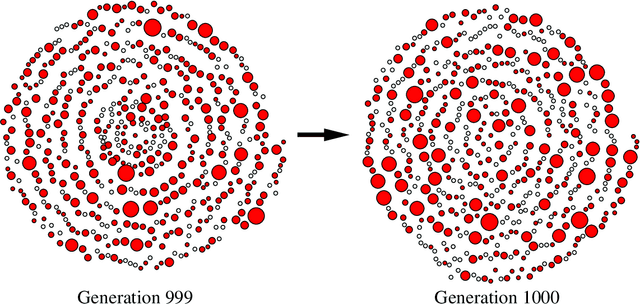
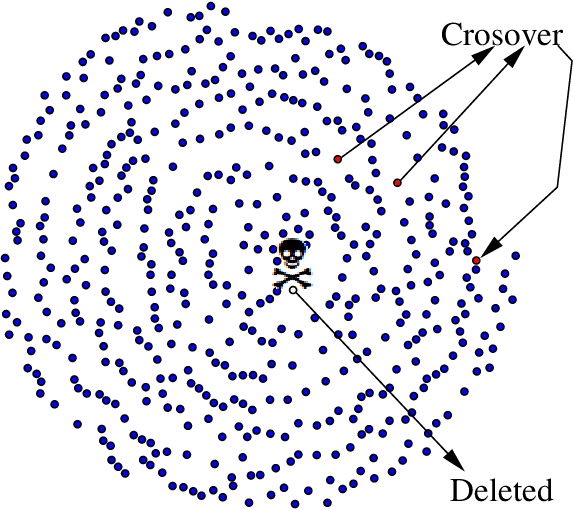

Abstract:C++ code snippets from a multi-core parallel memory-efficient crossover for genetic programming are given. They may be adapted for separate generation evolutionary algorithms where large chromosomes or small RAM require no more than M + (2 times nthreads) simultaneously active individuals.
Faster Genetic Programming GPquick via multicore and Advanced Vector Extensions
Feb 25, 2019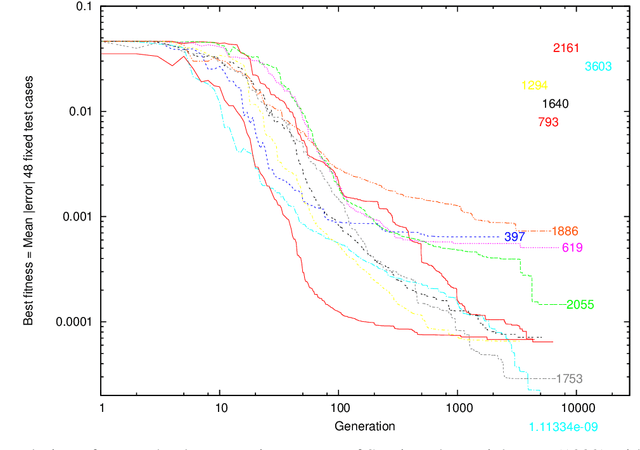
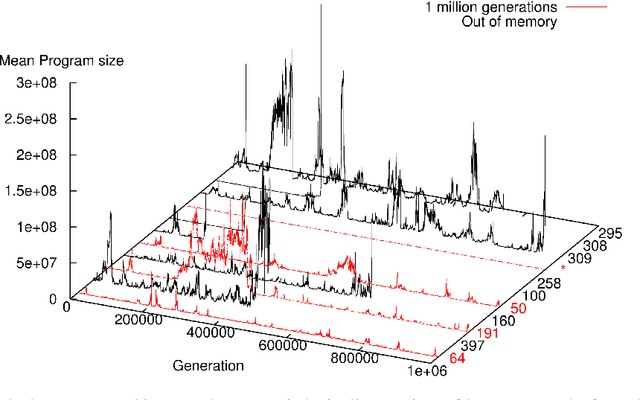
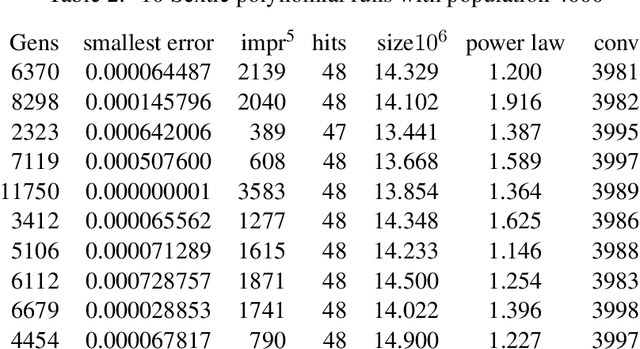

Abstract:We evolve floating point Sextic polynomial populations of genetic programming binary trees for up to a million generations. Programs with almost four hundred million instructions are created by crossover. To support unbounded Long-Term Evolution Experiment LTEE GP we use both SIMD parallel AVX 512 bit instructions and 48 threads to yield performance of up to 139 billion GP operations per second, 139 giga GPops, on a single Intel Xeon Gold 6126 2.60GHz server.
The Distribution of Reversible Functions is Normal
Aug 18, 2018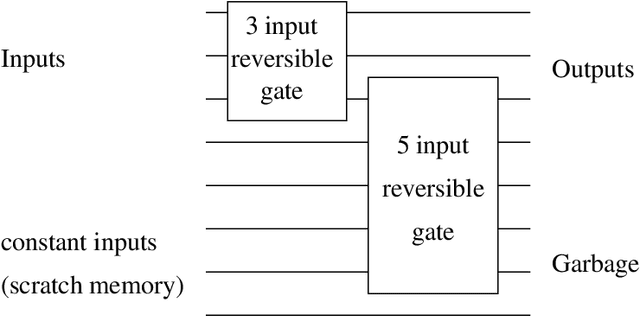
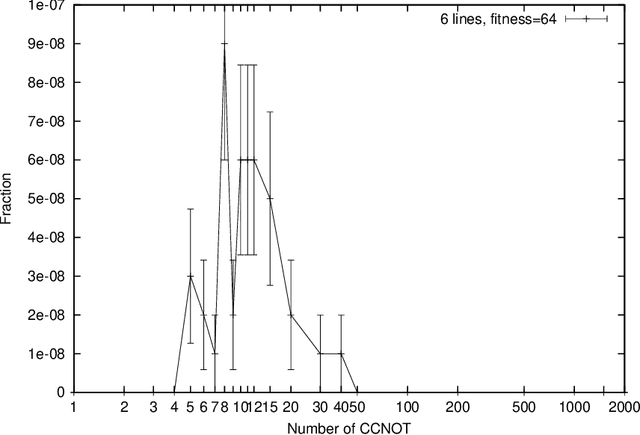
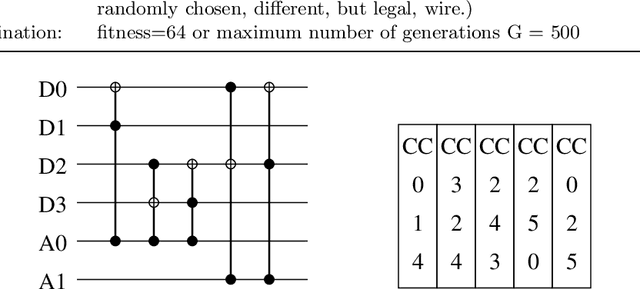

Abstract:The distribution of reversible programs tends to a limit as their size increases. For problems with a Hamming distance fitness function the limiting distribution is binomial with an exponentially small chance (but non~zero) chance of perfect solution. Sufficiently good reversible circuits are more common. Expected RMS error is also calculated. Random unitary matrices may suggest possible extension to quantum computing. Using the genetic programming (GP) benchmark, the six multiplexor, circuits of Toffoli gates are shown to give a fitness landscape amenable to evolutionary search. Minimal CCNOT solutions to the six multiplexer are found but larger circuits are more evolvable.
Long-Term Evolution of Genetic Programming Populations
Mar 24, 2017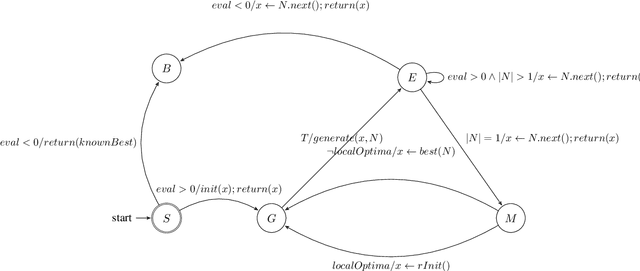
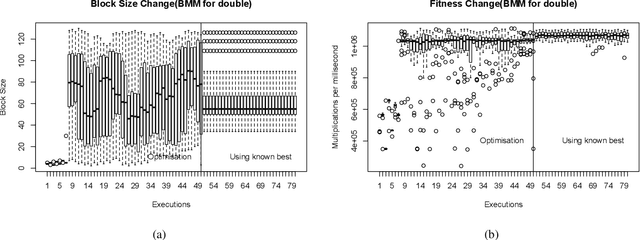
Abstract:We evolve binary mux-6 trees for up to 100000 generations evolving some programs with more than a hundred million nodes. Our unbounded Long-Term Evolution Experiment LTEE GP appears not to evolve building blocks but does suggests a limit to bloat. We do see periods of tens even hundreds of generations where the population is 100 percent functionally converged. The distribution of tree sizes is not as predicted by theory.
Using Genetic Programming to Model Software
Jun 24, 2013

Abstract:We study a generic program to investigate the scope for automatically customising it for a vital current task, which was not considered when it was first written. In detail, we show genetic programming (GP) can evolve models of aspects of BLAST's output when it is used to map Solexa Next-Gen DNA sequences to the human genome.
 Add to Chrome
Add to Chrome Add to Firefox
Add to Firefox Add to Edge
Add to Edge